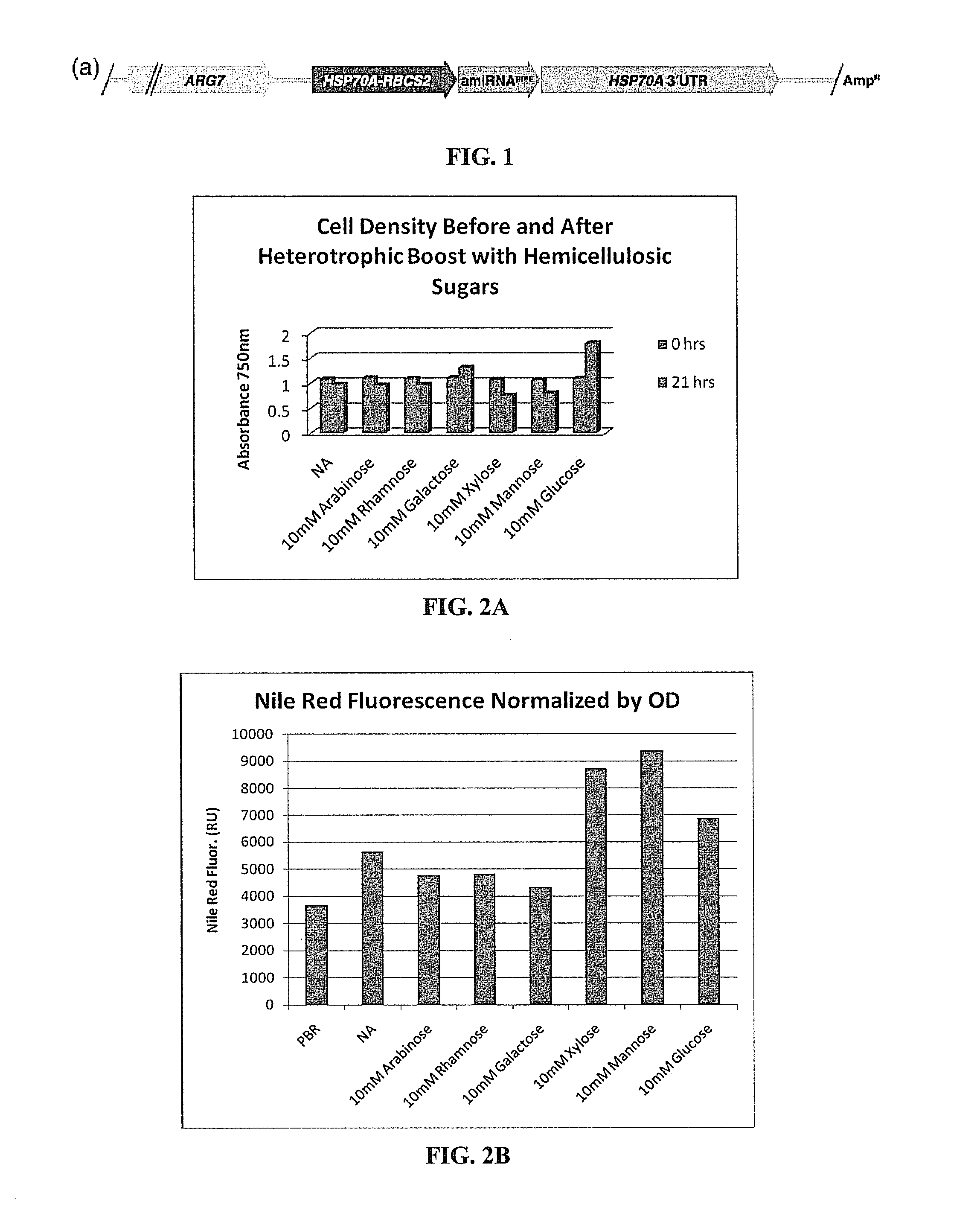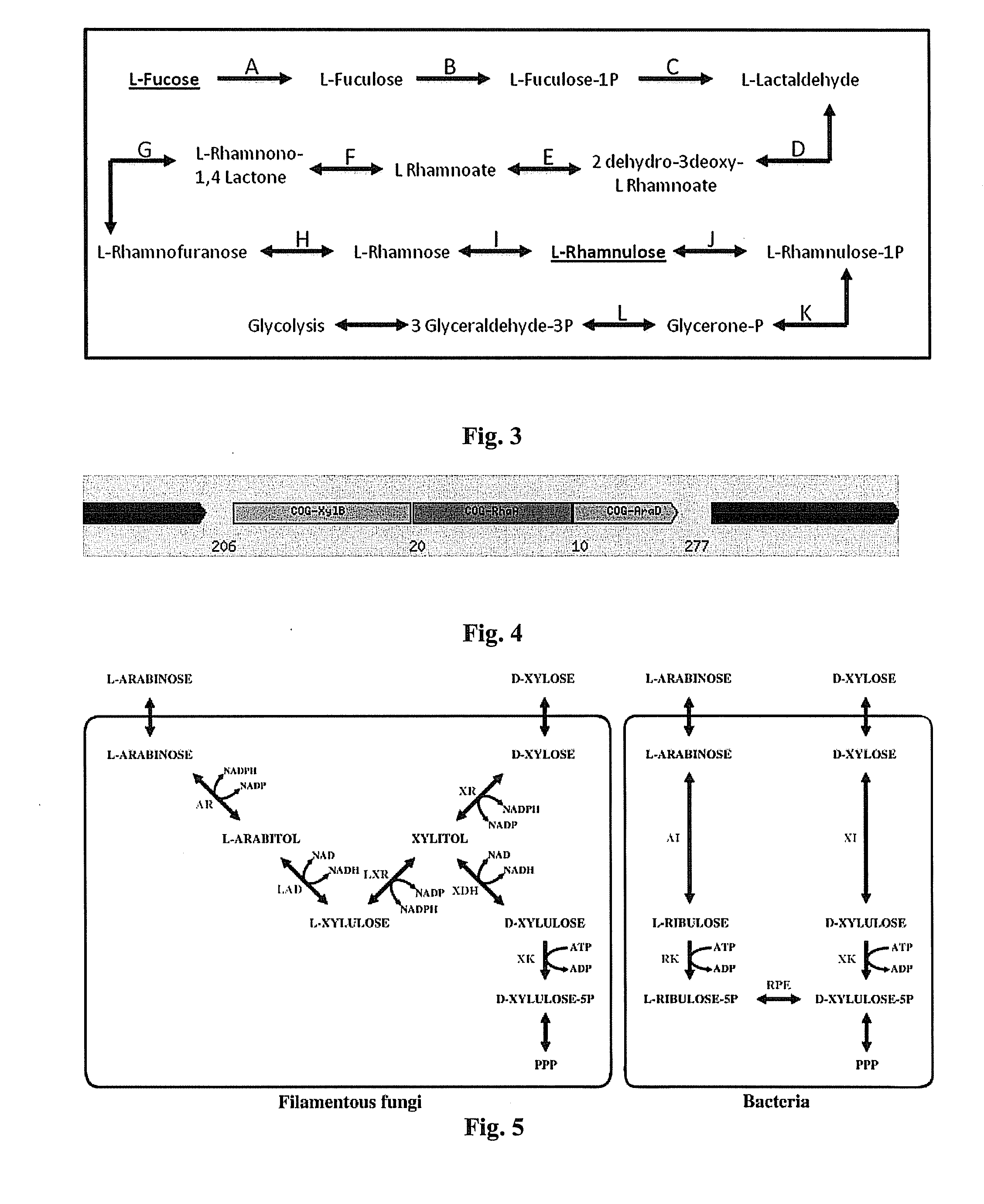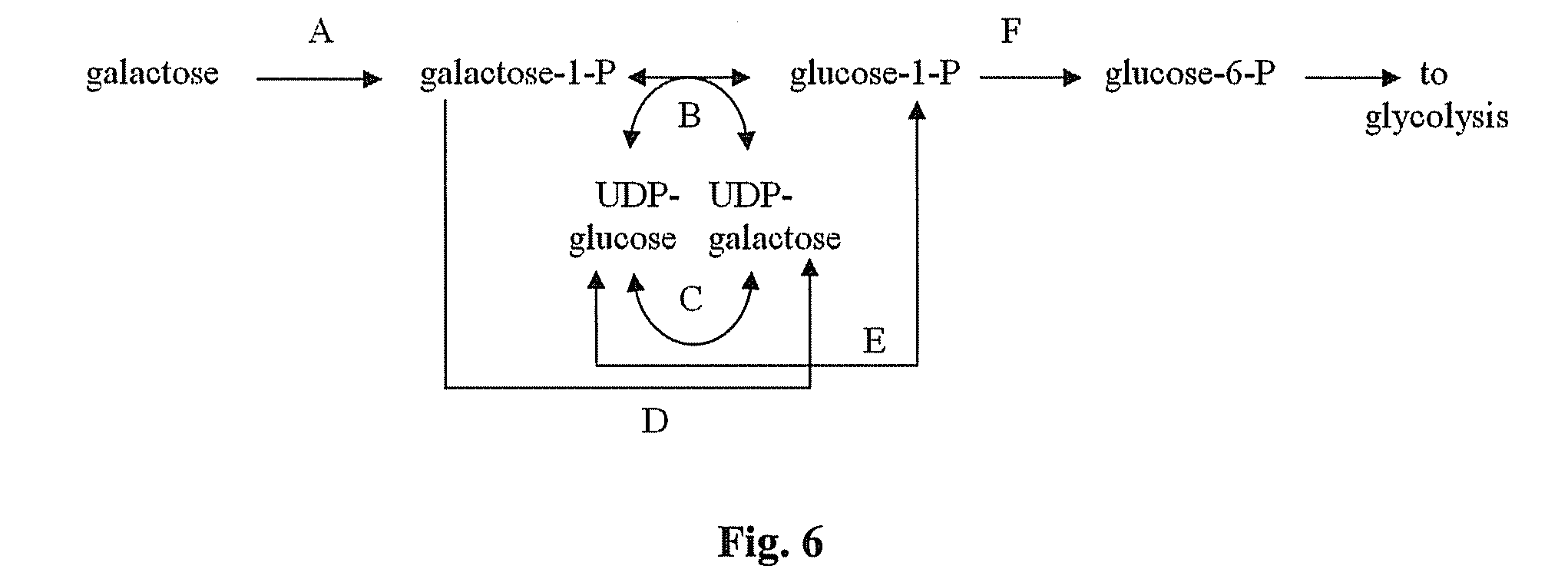Biofuel from recombinant oleaginous algae using sugar carbon sources
a technology of oleaginous algae and biofuel, which is applied in the field of microalgal biofuel systems, can solve the problems of high cost, unreliable method of selective growth of algae, and inability to include transporter proteins and/or sugar metabolizing enzymes, etc., and achieves high energy density, energy conversion efficiency, and high efficiency.
- Summary
- Abstract
- Description
- Claims
- Application Information
AI Technical Summary
Benefits of technology
Problems solved by technology
Method used
Image
Examples
example 1
Use of Alternative Carbon Sources to Support Growth and Oil Production of Chlorella protothecoides
[0088]The inventors have observed that the green alga, Chlorella protothecoides, will substantially increase both its biomass and percent oil content when grown photoheterotrophically or heterotrophically with various sugars. In the presence of 10 mM glucose, Chlorella protothecoides oil yields increased by as much as 50 fold compared to yields obtained when grown autotrophically.
[0089]A number of reduced carbon sources have been investigated for their ability to support growth and oil production in Chlorella protothecoides. The growth and oil yield responses of Chlorella protothecoides to various hemicellulosic sugars (10 mM for 21 hours) is shown in FIG. 2. Providing reduced carbon sources such as sugars or glycerol provides what is referred to as a “heterotrophic boost.” As can be seen from the data, maximum growth was achieved with glucose, with galactose also providing high growth...
example 2
Survey of Wild Algal Species for Heterotrophic Growth and Oil Production on Hemicellulosic Sugars
[0107]In addition to engineering C. protothecoides, the inventors can also identify algae naturally capable of metabolizing a broad range of hemicellulosic sugars. These algae may be directly useful, or may be useful candidates for additional genetic modification. Multiple locations can be sampled for hemicellulosic metabolizing algae. For example, a survey can be carried out across a longitudinal transect stretching from Thunder Bay, Ontario, located on Lake Superior to Port St. Joe, Fla., located on the Gulf Coast for microalgae capable of enhanced oil accumulation and heterotrophic growth on hemicellulosic sugars. The hemicellulosic sugars tested can include; glucose, xylose, mannose, galactose, rhamnose and arabinose. Algae will be sampled from tree bark and pulp mill effluent ponds. These three sites vary in their forest species composition and climate. The dominant hemicellulosic s...
PUM
| Property | Measurement | Unit |
|---|---|---|
| frequencies | aaaaa | aaaaa |
| fatty acid synthesis | aaaaa | aaaaa |
| energy | aaaaa | aaaaa |
Abstract
Description
Claims
Application Information
 Login to View More
Login to View More - R&D
- Intellectual Property
- Life Sciences
- Materials
- Tech Scout
- Unparalleled Data Quality
- Higher Quality Content
- 60% Fewer Hallucinations
Browse by: Latest US Patents, China's latest patents, Technical Efficacy Thesaurus, Application Domain, Technology Topic, Popular Technical Reports.
© 2025 PatSnap. All rights reserved.Legal|Privacy policy|Modern Slavery Act Transparency Statement|Sitemap|About US| Contact US: help@patsnap.com



